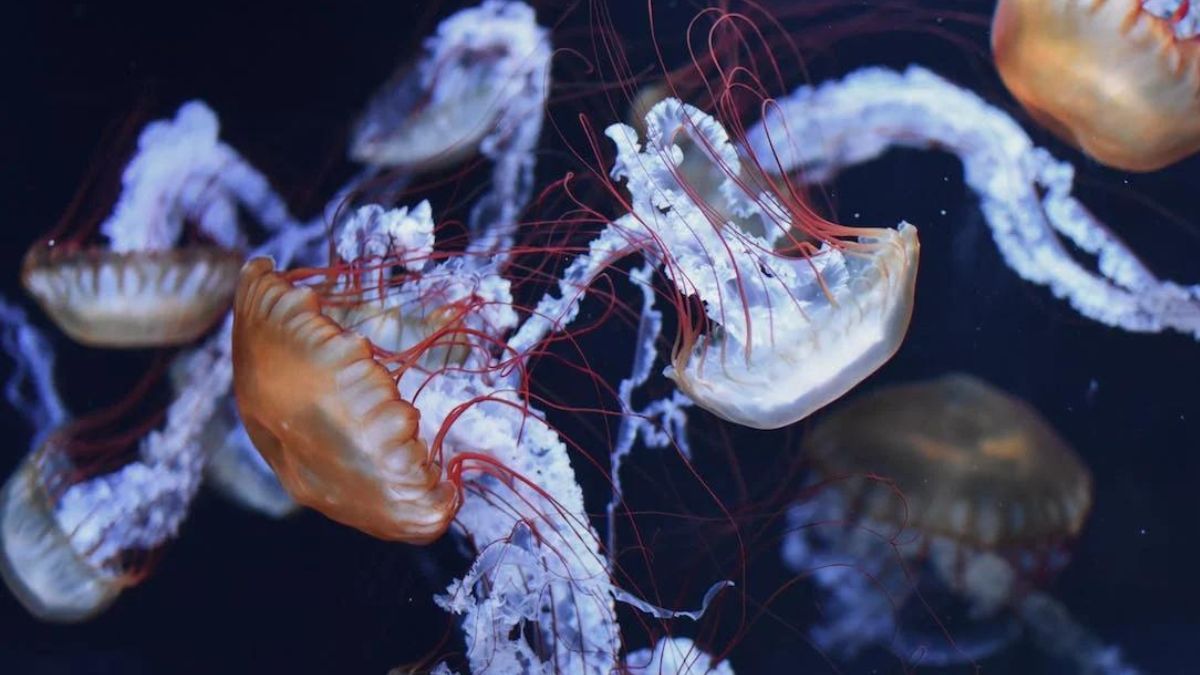The sting of a box jellyfish can induce paralysis, heart failure, and even death, earning it a place among the world’s most poisonous animals. Despite their lethal reputation, these animals are fascinating to examine because of their beauty. In this piece, we’ll learn about the anatomy of box jellyfish, discuss why they’re so dangerous, and discuss precautions you may do if you ever come across one.
Cnidarians occurring in the Pacific and Indian Oceans are commonly referred to as box jelly fish or sea wasps. The bells of these animals, which are named for their distinctive cube form, are normally clear and can reach a diameter of 30 centimetres (12 inches). Some kinds of box jellyfish have enough lethal venom to kill a human in just a few minutes, despite their seemingly harmless look. Knowing the anatomy, venom, and habitat of these critters can help you avoid dangerous interactions.
Anatomy of Box Jellyfish
When compared to other cnidarians, box jellyfish stand out due to their distinct anatomy. Their bells are cube-shaped, and each corner may support as many as 24 tentacles. Tentacles of this size can reach a length of 10 feet (3 m), and they are packed with hundreds of stinging cells called nematocysts that can inject poison into their prey or predators.
The bells of box jellyfish feature eye spots that can sense light and dark areas. A basic neural system linked to these eye spots gives box jelly fish the ability to respond to their surroundings.
The Venom of Box Jellyfish
Box jellyfish venom is a very toxic combination of neurotoxins that can be fatal. Although each species of box jellyfish has its own unique venom, all of them pose a serious threat to humans.
- The nematocysts on a box jellyfish’s tentacles inject venom when the animal stings a human. Venom’s effects can range from hardly noticeable to lethally severe. Box jellyfish stings can cause extreme pain, nausea, vomiting, respiratory distress, and even death.
- It were medical help right away if you were stung by a box jelly fish. Removal of any remaining tentacles, followed by the application of vinegar to the sting site to neutralise the venom, and prompt medical assistance are the standard first aid procedures for box jelly fish stings.
Habitat and Distribution
Some species of box jellyfish can be found as far north as Japan and as far south as Australia, but they are most commonly found in the waters of the Pacific and Indian Oceans. They favour estuaries and other areas of shallow coastal water, where they may find the small fish and invertebrates that make up their diet.
Rising sea temperatures and shifting ocean currents have had a major impact on box jelly fish populations, increasing the frequency and intensity of jellyfish blooms. These blooms not only affect marine ecosystems by outcompeting other species for resources, but they can also be hazardous to swimmers and fisherman.
Avoiding Box Jellyfish Stings
When swimming in regions where box jelly fish are known to be, precautions should be taken to avoid getting stung. Avoid swimming in areas with high concentrations of jellyfish, and protect yourself by using a full-body swimsuit.
Environmental actions, such as lowering nutrient pollution in coastal waters and controlling fishing of jellyfish predators, can also be implemented to avert blooms. However, additional study is needed to identify the causes of jellyfish blooms and create efficient mitigation plans.
Conclusion
Finally, box jellyfish’s fatal beauty serves as a reminder of the marine environment’s complexity and diversity. These animals need our attention and study because of the crucial function they play in marine ecosystems. Protecting ourselves and the environment from box jelly fish stings requires an awareness of the animals’ anatomy, venom, habitat, and behaviour.











